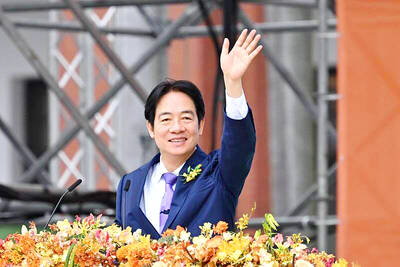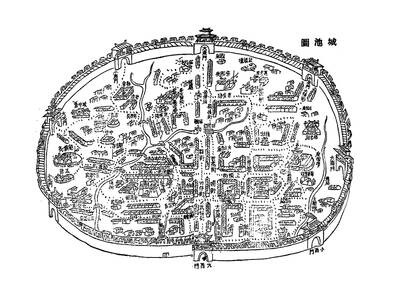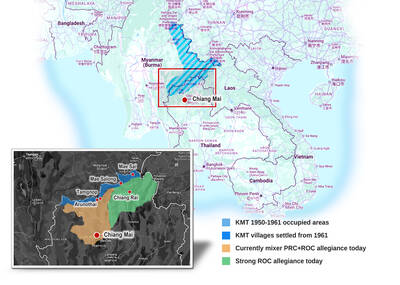Katyn is one of those place names, like Auschwitz or the Somme, the very mention of which calls forth images of death. Not just the deaths of individuals, terrible as that is in itself, but also the death, the willful ravishing of the human spirit, in the victims as well as the perpetrators.
The title of the film refers to the 1940 Katyn massacre in which an estimated 22,000 Polish prisoners of war were executed by Soviet troops. A concerted Soviet propaganda campaign was subsequently launched to place the blame for the massacre on the defeated Nazi regime, a campaign that, especially in its use of willing or unwilling collaborators, heaped insult on injury.
This is hardly new territory for Wajda, who has made many highly acclaimed feature films exploring Poland’s history, especially the depredations of the Soviets. Katyn cleaned up at the Polish Film Awards last year, and though the film’s appeal my not be quite so apparent outside Poland, it has also been nominated for Best Foreign Language Film at this year’s Oscars. The first hurdle to Katyn is that considerable knowledge of the complex political maneuvering behind Soviet-German relations during the early 1940s is crucial in appreciating the complexity of the enormous tapestry that Wajda weaves in Katyn.
The film juggles a number of story lines. It follows the gradual progress of the Polish officers toward their final destruction and the slow realization that the standards of war they had been taught no longer applied in this new and horrific conflict. It also follows the families left behind, who first hope, then grieve, then revolt against the imposition of lies they are forced to swallow. Wajda presents Poland, with its high intellectual traditions and strong middle-class values, as caught between two messianic regimes that want to recreate the world in their own images.
In the very first scene, we see that Wajda is setting Katyn up as a Greek tragedy on a grand scale. Anna (Maja Ostaszewska), the wife of an army officer, flees the Germans only to run into friends coming the other way, fleeing the Soviets. Which way to run? Poland is caught between the hammer and the anvil. Anna’s husband Andrzej (Artur Zmijewski), has a chance to sneak away in the chaos as Polish troops are corralled by the Soviets, but refuses to leave his regiment in the belief that as POWs, he and his troops will be dealt with according to recognized rules of war. His gradual realization that these rules have long since been thrown out the window is heartrending to witness.
And so the film progresses through its 118 minutes, and it is a marvel that Wajda is able to condense so much into such a sort time. In Hollywood, nothing less than three hours would suffice for such an epic, but Wajda is a master storyteller, conveying enormous complexities in three or four lines of dialogue. The emphasis of Katyn is political rather than personal, or, more correctly, its focus is the psychological and emotional impact that politics can have on ordinary people. Anna and Andrzej are both a kind of Polish everyman rather than deeply drawn characters, but they are convincing enough to elicit sympathy at their horrendous plight. Lieutenant Jerzy (Andrzej Chyra), Andrzej’s friend and comrade in arms, is a good man who toes the Soviet line in order to live, but shoots himself when he realizes that his actions have lost him everything he values. The characters are sketched with conviction, but you are left in no doubt that the protagonist throughout is Wajda’s beloved Poland.
And for the Polish officers held by the Soviets, Wajda lingers over the terrible images of carnage as man after man is taken from a Black Maria and shot in the back of the head. Some are stoical, others call on Jesus, others are merely bewildered, husbands, fathers, sons, dispatched with a terrifyingly dispassionate efficiency over a scene that runs for more than 10 minutes. This is the final exclamation point on which the film ends, and the harrowing injustice that such an action should have taken place stays with the viewer long after one leaves the theater. And, Wajda seems to say, this is only the beginning, for on top of the bodies lie a mountain of lies, and these lies will breed further injustice and more violent death.

President William Lai (賴清德) yesterday delivered an address marking the first anniversary of his presidency. In the speech, Lai affirmed Taiwan’s global role in technology, trade and security. He announced economic and national security initiatives, and emphasized democratic values and cross-party cooperation. The following is the full text of his speech: Yesterday, outside of Beida Elementary School in New Taipei City’s Sanxia District (三峽), there was a major traffic accident that, sadly, claimed several lives and resulted in multiple injuries. The Executive Yuan immediately formed a task force, and last night I personally visited the victims in hospital. Central government agencies and the

May 26 to June 1 When the Qing Dynasty first took control over many parts of Taiwan in 1684, it roughly continued the Kingdom of Tungning’s administrative borders (see below), setting up one prefecture and three counties. The actual area of control covered today’s Chiayi, Tainan and Kaohsiung. The administrative center was in Taiwan Prefecture, in today’s Tainan. But as Han settlement expanded and due to rebellions and other international incidents, the administrative units became more complex. By the time Taiwan became a province of the Qing in 1887, there were three prefectures, eleven counties, three subprefectures and one directly-administered prefecture, with

Among Thailand’s Chinese Nationalist Party (KMT) villages, a certain rivalry exists between Arunothai, the largest of these villages, and Mae Salong, which is currently the most prosperous. Historically, the rivalry stems from a split in KMT military factions in the early 1960s, which divided command and opium territories after Chiang Kai-shek (蔣介石) cut off open support in 1961 due to international pressure (see part two, “The KMT opium lords of the Golden Triangle,” on May 20). But today this rivalry manifests as a different kind of split, with Arunothai leading a pro-China faction and Mae Salong staunchly aligned to Taiwan.

As with most of northern Thailand’s Chinese Nationalist Party (KMT) settlements, the village of Arunothai was only given a Thai name once the Thai government began in the 1970s to assert control over the border region and initiate a decades-long process of political integration. The village’s original name, bestowed by its Yunnanese founders when they first settled the valley in the late 1960s, was a Chinese name, Dagudi (大谷地), which literally translates as “a place for threshing rice.” At that time, these village founders did not know how permanent their settlement would be. Most of Arunothai’s first generation were soldiers